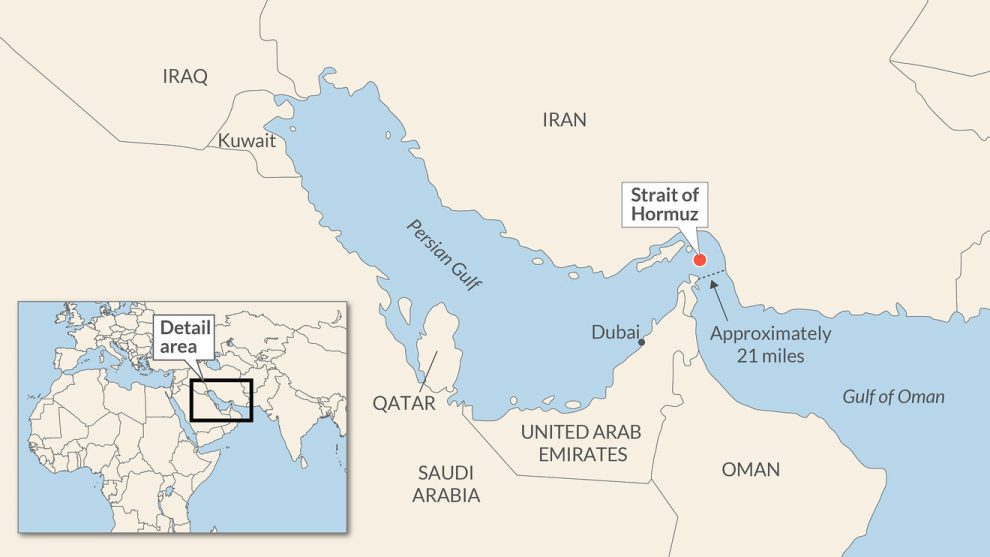
The Strait of Hormuz, the world’s most sensitive oil-transportation choke point, was in focus Thursday, after two tankers were reportedly attacked, and damaged, off the coast of Iran.
The two ships had recently transited the strait, which connects the Gulf of Oman to the Persian Gulf.
Oil futures US:CLM9 BRNQ19, +3.59% surged more than 4%, with traders citing the attack as a factor for the rally. U.S. Treasurys, typically a haven during periods of global uncertainty, rallied, pulling down yields, but the attacks didn’t appear to dent appetite for risky assets, with U.S. stock-index futures pointing to a higher start for Wall Street.
The incident is expected to heighten tensions between the U.S. and Iran following damage to vessels in the region in May, which the U.S. blamed on Tehran. Iran has denied involvement.
Iranian state media on Thursday initially reported that the country’s vessels had helped evacuate the crews of the stricken vessels, but later clarified that passing ships nearby had come to the rescue, according to The Wall Street Journal (paywall). “Suspicious doesn’t begin to describe what likely transpired this morning,” Iranian Foreign Minister Javad Zarif said, on Twitter.
Here’s a look at the Strait of Hormuz and why it’s so important to the global crude-oil market.
Where is the Strait of Hormuz?
The Strait of Hormuz is a narrow waterway that, as noted, links the Persian Gulf with the Gulf of Oman and the Arabian Sea.
At its narrowest point, the waterway is only 21 miles wide, and the width of the shipping lane in either direction is just 2 miles, separated by a two-mile buffer zone.
Why is it important?
Oil tankers carrying crude from ports on the Persian Gulf must pass through the strait. Around 18.5 million barrels a day of crude and refined products moved through it in 2016, nearly a third of all seaborne-traded oil and almost 20% of all oil produced globally, according to the U.S. Energy Information Administration. That makes the Strait of Hormuz the world’s most sensitive oil transportation choke point.
What’s the threat?
Iranian officials in April threatened to interrupt the flow of oil through the strait after the Trump administration said it would end waivers that allow countries to import Iranian oil.
Iranian Foreign Minister Javad Zarif, in early May, said the country had no interest in escalating tensions with the U.S., according to Iranian news agency Tasnim. He said Tehran viewed the Persian Gulf and the Strait of Hormuz as “our lifeline” and wanted them “safe, secure and free for navigation of all countries, including Iran.”
A pair of Saudi oil tankers and a Norwegian-flagged vessel were damaged last month in what Gulf officials called a “sabotage” attack off the coast of the United Arab Emirates.
The U.S. in May announced it was sending an aircraft carrier group, bombers and a Patriot antimissile battery to counter what the Trump administration said were “clear indications” that Iran and its proxies were preparing to possibly attack U.S. forces in the region, the AP reported. That’s in addition to the presence of the U.S. Fifth Fleet, which is based in Bahrain.
Could Iran close the strait?
The Fifth Fleet’s presence has long cast doubt on Iran’s ability to close the waterway, analysts said.
The U.S. naval presence would make it extremely difficult for Iran to choke off traffic, but the country “has the strategic depth to stage one-off attacks on vessels, not just in the critical chokepoints but also in the region’s relatively open waters,” wrote Helima Croft, global head of commodity strategy at RBC Capital Markets, in a May research note.









